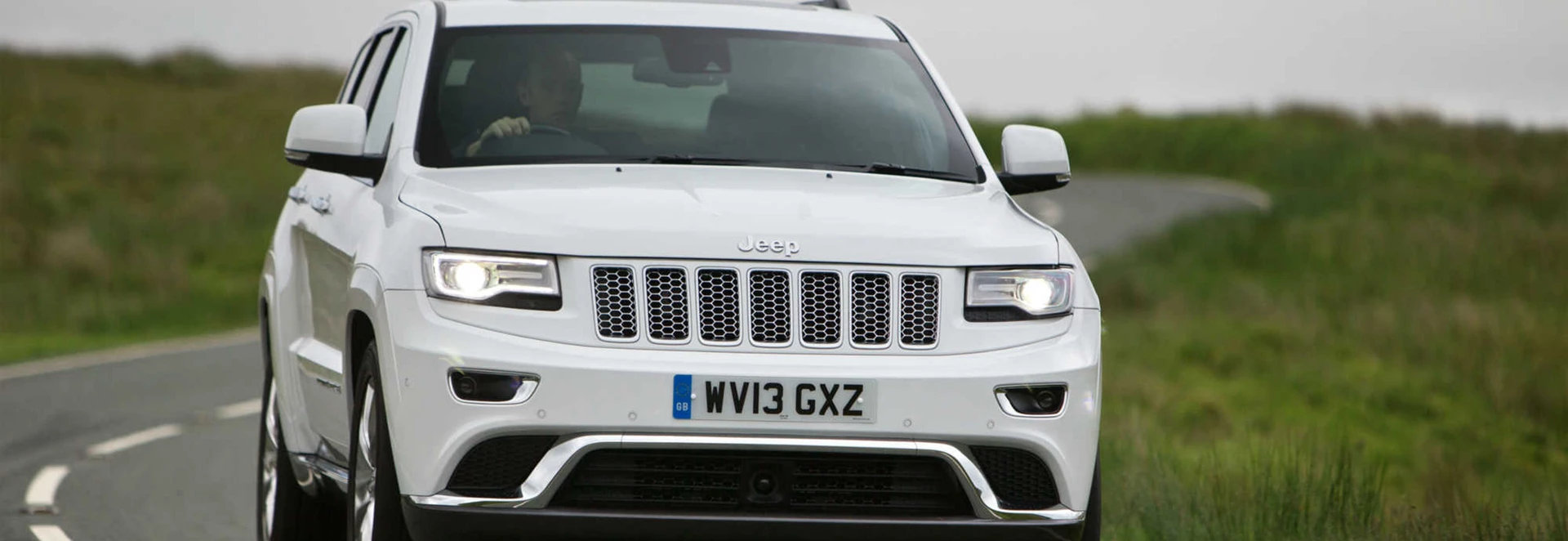The current Grand Cherokee was launched in 2011 but given a major upgrade two years later. It's a large SUV mostly sold in the UK with a 3.0-litre six-cylinder diesel engine producing 188bhp in the entry-level Laredo and 247bhp in everything else. A 462bhp 6.3-litre HEMI V8 petrol SRT version is also available, but it doesn't sell well here.
All Grand Cherokees have four-wheel drive and the ZF eight-speed automatic gearbox also used by several other manufacturers, including Land Rover. Among the diesels there are five trim levels, one of which - called Limited Plus - was created specifically for the UK market and has sports suspension and upgraded brakes.
Performance
The SRT is startlingly quick, with a 5.0-second 0-62mph time which is quite something for a car weighing 2.4 tonnes. Its top speed is 160mph, well in advance of the 126mph achieved by the 247bhp diesels and the 119mph of the 188bhp version. The last of these is the only Grand Cherokee incapable of accelerating from 0-62mph in under ten seconds - the 247bhp cars can do this in 8.2.
The diesels are as quick as they need to be, and are much quieter than large Jeeps with this type of engine were in the past. Having said that, however, the diesel sound doesn't disappear until it's drowned by wind noise at motorway speeds.
The ZF gearbox is one of the highlights of any car it's fitted to, moving from one ratio to the next with wonderful smoothness.
Ride and Handling
All the diesel-run Grand Cherokees are very capable off-road, but the Overland and Summit are better than the rest of the range for this type of driving.
While the power output of the SRT requires careful use of the throttle pedal, the diesels behave quite well and can be pushed through corners with some confidence if the need arises. Ride quality is good, even in the Limited Plus, whose 20-inch wheels and stiffer suspension start to become uncomfortable only over small and sudden bumps. All the diesel-run Grand Cherokees are very capable off-road, but the Overland and Summit are better than the rest of the range for this type of driving. That’s thanks to their Quadra-Drive II four-wheel drive systems (as opposed to the more basic Quadra-Trac II) with electronic rear limited slip differential and air suspension which gives the driver a choice of ride heights. The SRT has four-wheel drive too, but that's mostly to keep it under control on tarmac. It isn't expected to be used on-road. The maximum capacity with a braked trailer on a 12 per cent gradient is 3,500kg for all versions other than the Summit and SRT, which can manage a more modest 2,949kg.
Interior and Equipment
This is the fourth-generation Grand Cherokee in an unbroken line stretching back to 1993.
The 2013 upgrade increased the number of non-SRT trim levels from two to five. All apart from the Laredo have a purposeful-looking chrome grille, leather upholstery, a heated steering wheel, a powered tailgate and a reversing camera. The TFT (Thin Film Transistor) instrument panel can be configured by the driver, and there's a well-designed 8.4-inch colour touchscreen with satellite navigation and DAB digital radio in the centre of the dashboard on all but the Laredo and Limited, where it's part of an optional £1,800 package. A rear-seat DVD/Blu-Ray player is available an option on the Overland, Summit and SRT models for a further £1,425. Luggage capacity is a healthy 782 litres with the rear seats in place. When they're folded down, the total is 1,554 litres, some way short of what you get in comparable Land Rover products. Seeing out of the Grand Cherokee is quite difficult as there's very little glass at the rear, and the windscreen pillars are enormous.
Cost
Since the SRT has a list price on the high side of £60,000, running costs are unlikely to be a major issue for the few people who buy it.
Since the SRT has a list price on the high side of £60,000, running costs are unlikely to be a major issue for the few people who buy it. That's just as well, because its combined economy is 20.8mpg (which you can forget about achieving if you take advantage of its performance potential) and its 327g/km CO2 emissions make it as expensive to tax as any private passenger vehicle on the market. Meanwhile, the equivalent figures for the diesels are 37.7mpg and 198g/km regardless of power output. In practice, the less powerful Laredo will probably use less fuel, though it will cost the same to tax as the others.
Our Verdict
The very American looks of the Grand Cherokee might be slightly off-putting for some, though other will probably love it. Either way, it's a more than competent SUV, with a combination of excellent on-road manners and considerable off-road ability. Keep in mind before purchasing, however, as to whether you can handle the high running costs, which are especially steep with the SRT version. Still, as a relatively cheap alternative to a Range Rover or Land Rover Discovery, the Grand Cherokee has a lot going for it.




